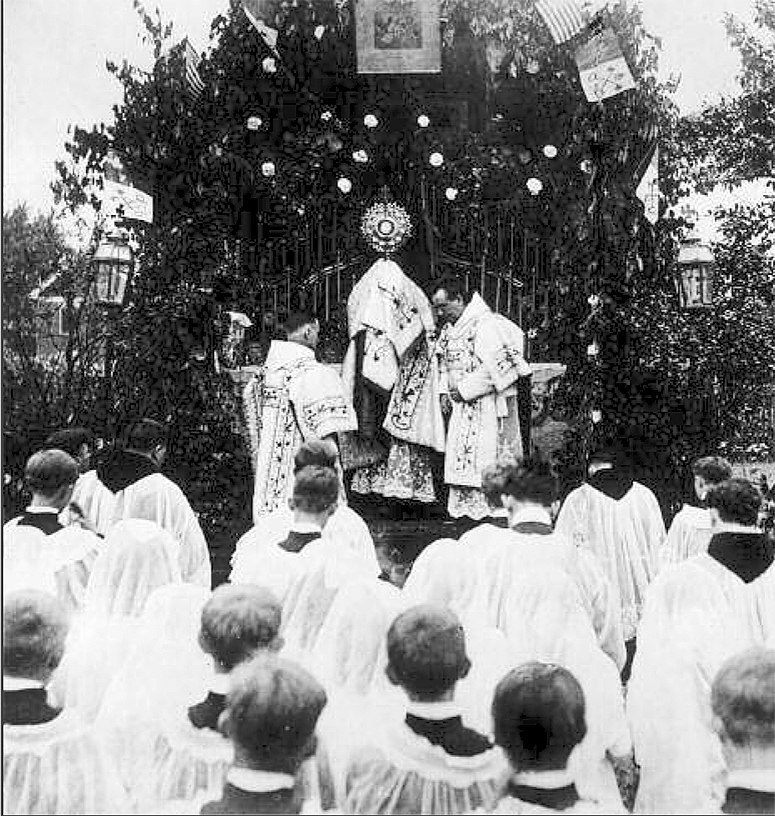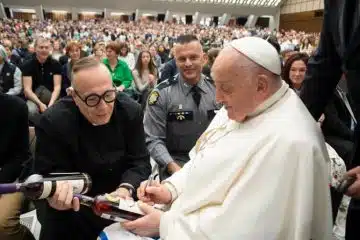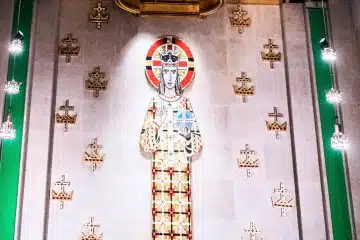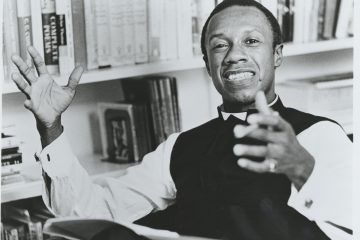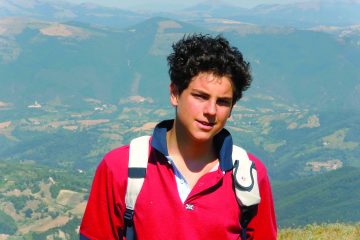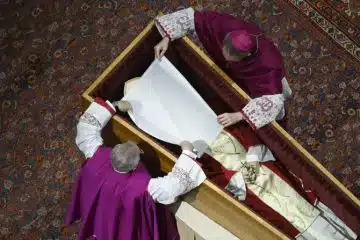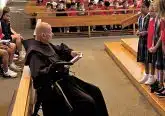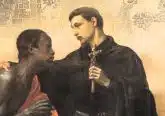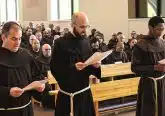In the Land of the Infidels: How the Franciscan parish was invented in Cincinnati
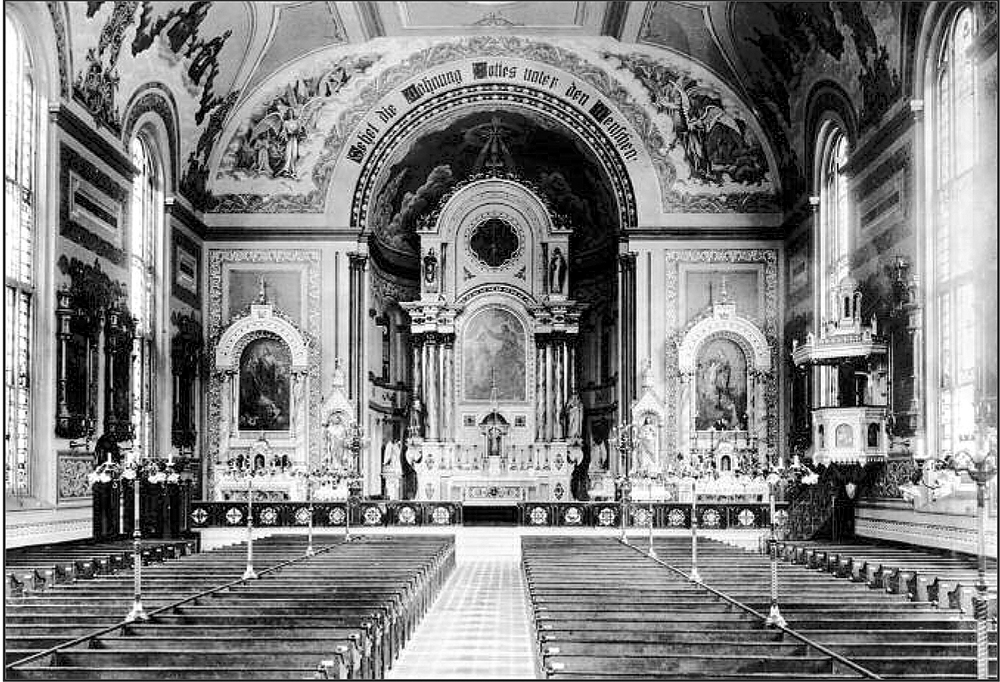
By Gail Finke
(An older version of this story was posted in error.)
Franciscans in Europe didn’t pastor churches. Even when sent on foreign missions, they established friaries, where they lived together in community and worked with the poor.
But in America, things were different. Father David Endres, dean of the Athenaeum of Ohio/Mount St. Mary’s Seminary of the West, “Telegraph” columnist, and professional historian, has chronicled the history of the Franciscan parish in America in a new book. “Many Tongues, One Faith: A History of Franciscan Parish Life in the United States” traces the many different Franciscan congregations that came to America to do mission work, and the many parishes they established here.
Two of the parishes he highlights are (or were) in the Archdiocese of Cincinnati. The first, St. John the Baptist, closed in 1969 – but the second, St. Clement, still serves the small city of St. Bernard.
Father Endres said his research took him to Franciscan archives around the country for records and photographs, and introduced him to personal stories from friars from around the world facing the challenges of a new country. “I was continually fascinated by the experiences of diverse ministry in every possible milieu,” he said. “They served in ethnic parishes, urban parishes, rural parishes, Native American parishes – and then, after the Baby Boom, suburban parishes.
“In Arizona, some of the parishes were the size of entire East Coast states. They served parishes in the Navajo Nation, on the Papago Reservation – it’s an amazing story of discerning and serving people’s needs.”
A Franciscan parish, Father Endres said, has three distinct marks: a family dynamic, “minority,” and a special commitment to reconciliation and peace.
Part of being a Franciscan is being a brother (or sister) to each other and to all. “They would say they are ‘lesser brothers,’” he explained. “So, at a parish they live in fraternity and relationship with each other and those they’re serving. It has a family dynamic.”
The second mark, “minority,” is related. The name “friar minor” means “little brother,” and a Franciscan parish in the United States was originally made up of poor immigrants. As time passed, Franciscans were usually sent to serve in poor or minority parishes that needed special attention. “’Minority’ is fraternity with the least,” Father Endres said, a sort of solidarity and shared life with the people they were helping to adjust to a new country, or reap the benefits of belonging to it.
The third mark, reconciliation, meant assigning Franciscans to parishes in places like the Watts neighborhood of Los Angeles after the infamous riots in 1965. “They’re often called on to help bridge conflicts and help bring healing and peace,” he said.
St. John the Baptist Church is today most remembered for launching the St. John Passion Play, which is still performed every Easter. Located at Green and Bremen Streets in the German-speaking area derisively nicknamed “Over-the-Rhine,” the church was first pastored by Father William Unterthiner, a Reformed Franciscan of the Province of St. Leopold in Austria, who had wanted to work in the Holy Land. “In Cincinnati, he was told, he could satisfy the greatest of needs: Many souls were perishing for lack of a priest,” Father Endres wrote.
Father Unterthiner “likened his missionary work to entering into a completely foreign world,” the book continues. “…on at least two occasions he ended his correspondence with ‘in partibus infedlium’” – in the land of the infidels. The phrase referred both to his flock, which he found mostly ignorant of the faith and often unbaptized, but the surrounding anti-Catholic Protestant population as well. He wrote home that while Americans were free to choose any or no religion, “one would still be very mistaken if he believed that Catholics are allowed to live unhindered.”
In then-rural St. Bernard, Father Endres found, Catholic life was far more peaceful for the Tyrolian friars sent to pastor St. Clement. Small and quiet from the beginning (“A priest has almost nothing to do here during the week for the care of souls,” the book quotes the pastor complaining in an 1857 letter), the parish celebrated Catholic holidays and traditions unhindered by anti-Catholic sentiment. Its annual Corpus Christi procession, he said, lasted up to two hours and attracted Catholics from around the region.
Father Endres found that Franciscan missionaries in Cincinnati, where Archbishop John Baptist Purcell was adamant in his insistence that they be sent, were looked at warily by their brothers in Europe. The experience of centuries had taught Franciscans there that pastoring parishes was not compatible with the Franciscan way of life, and at first the American experiment reinforced that view. “In the eyes of the Old Word Franciscans, the U.S. friars seemed only ‘Half Franciscan,’” he wrote – not entirely diocesan priests, yet not entirely members of an order.
But Archbishop Purcell persevered and the Tyrolian Franciscans eventually established a new province based in Cincinnati and named for him: the Province of St. John the Baptist. Cincinnati was then the gateway to the West, and soon Franciscans were moving west, where pastoring parishes continued, and continues, to be a necessary part of their mission work. In this novel way of mission, Father Endres said, Franciscans “continue to be in the thick of things, discerning how to be Catholic and Franciscans in America.”
Click here for part two of this story, “Life at historic St. Clement parish today”
“Many Tongues, One Faith” is the first of six books on Franciscan life in America commissioned by the Academy of American Franciscan History in Oceanside, California, Director Jeffery M. Burns, said Father Endres was chosen for the project because he is “a major scholar of the history of Catholicism in the United States,” and that the series is designed to tell the largely unknown story of how the Franciscans, the largest religious order in the country, “contributed to the building of the Church in the United States, and of its contribution to building the country as well.”
The second book, “Voice of Empathy: Franciscan Media in the United States” by Indiana University professor Raymond Haberski, Jr., will also be published in April and will also feature Cincinnati-area Franciscans.
